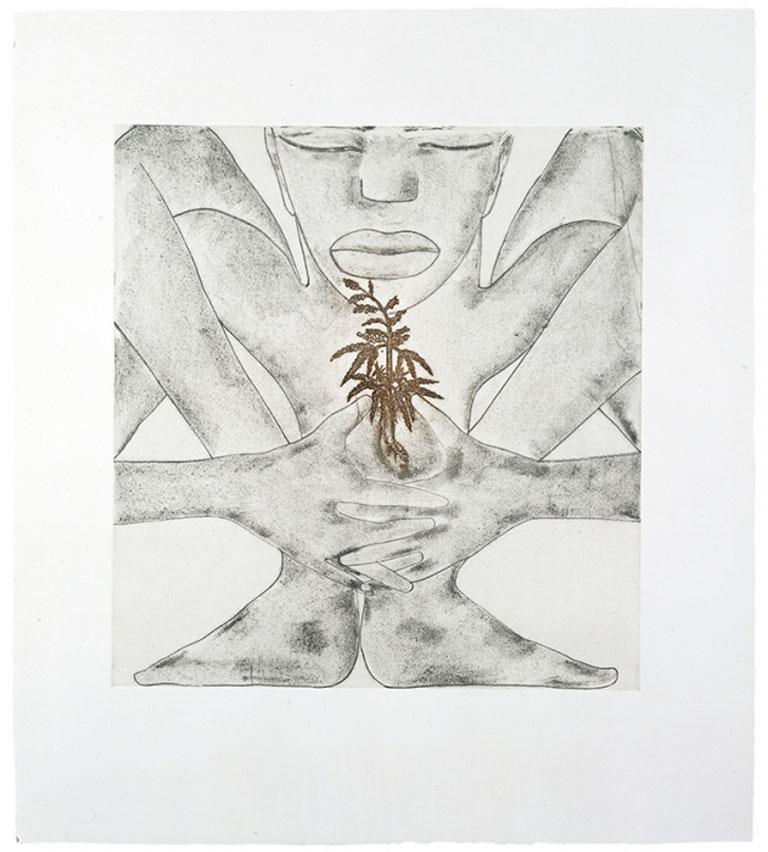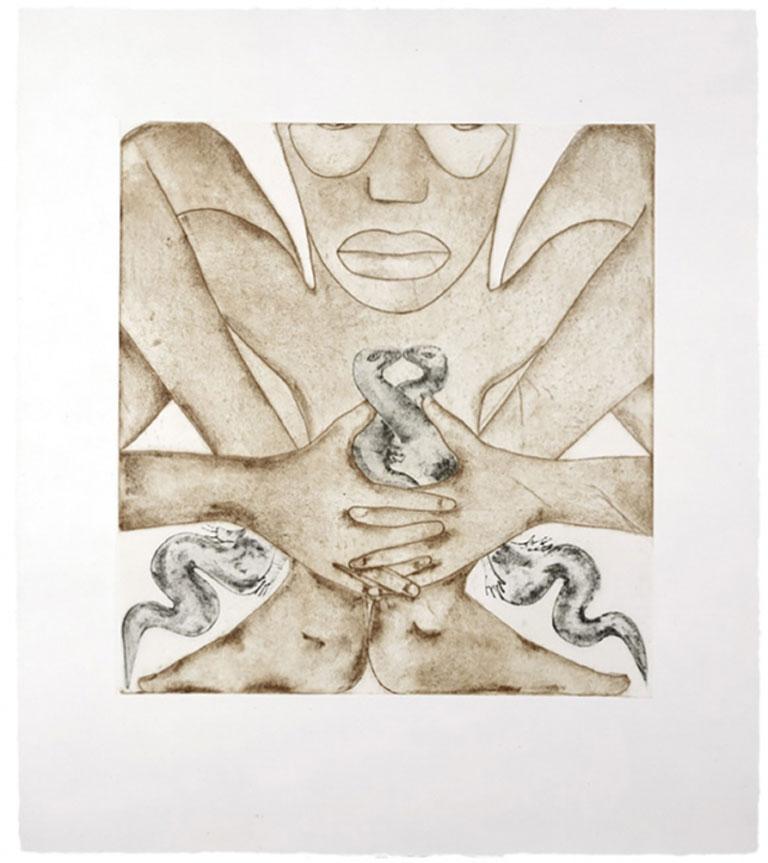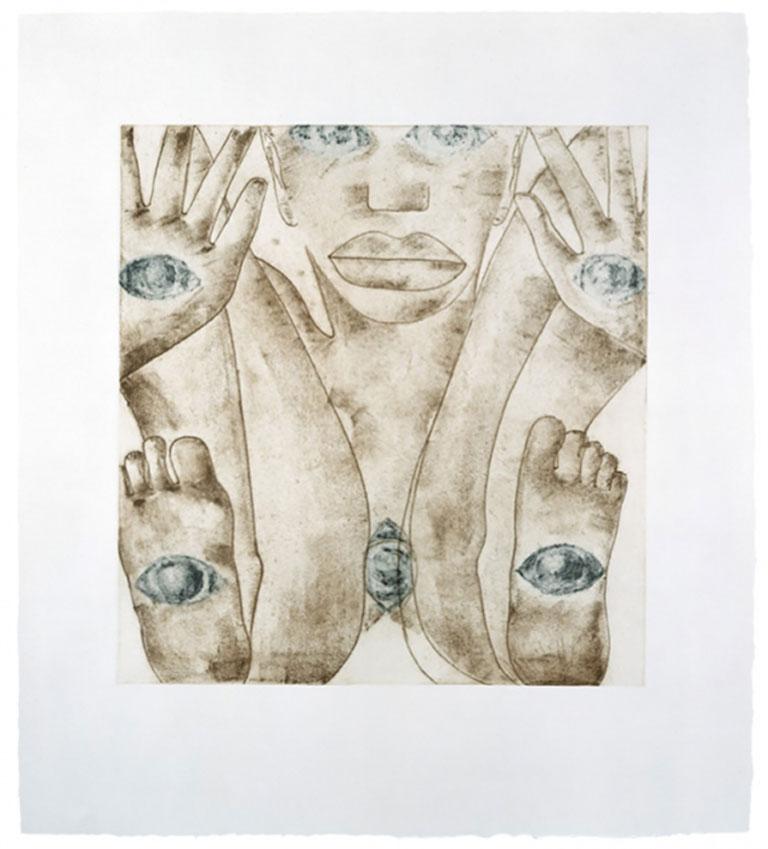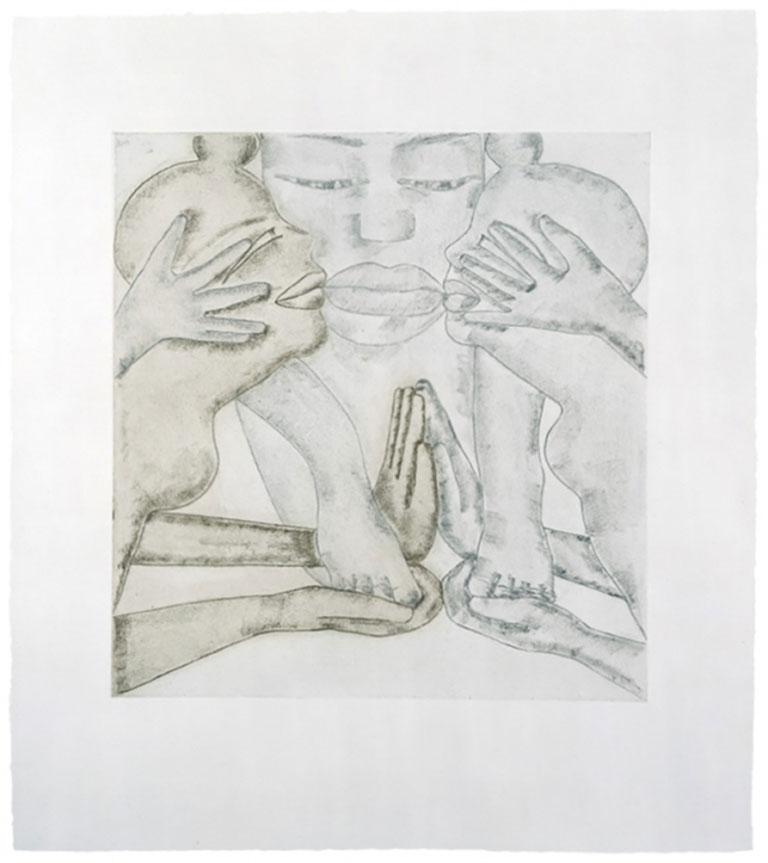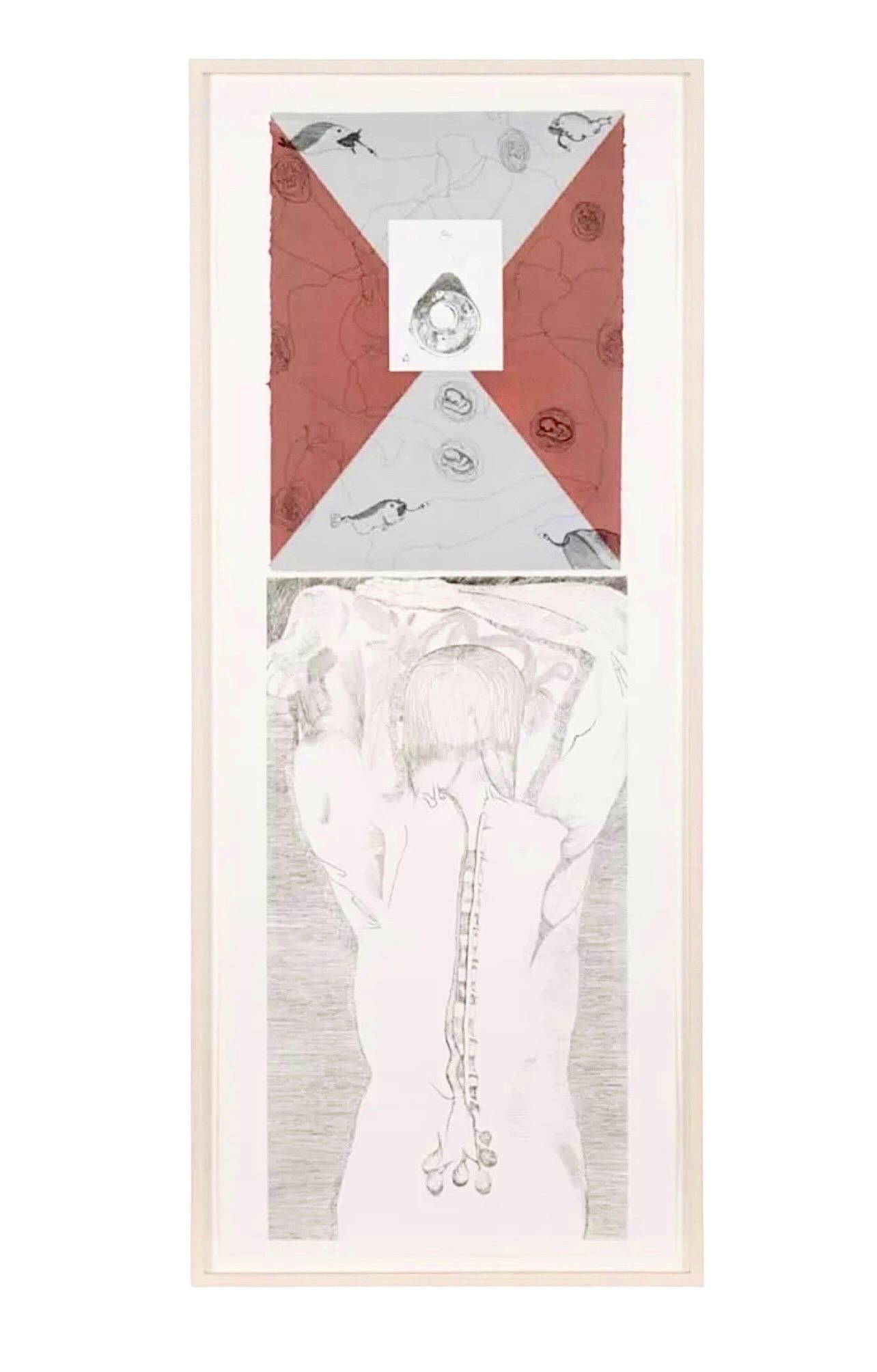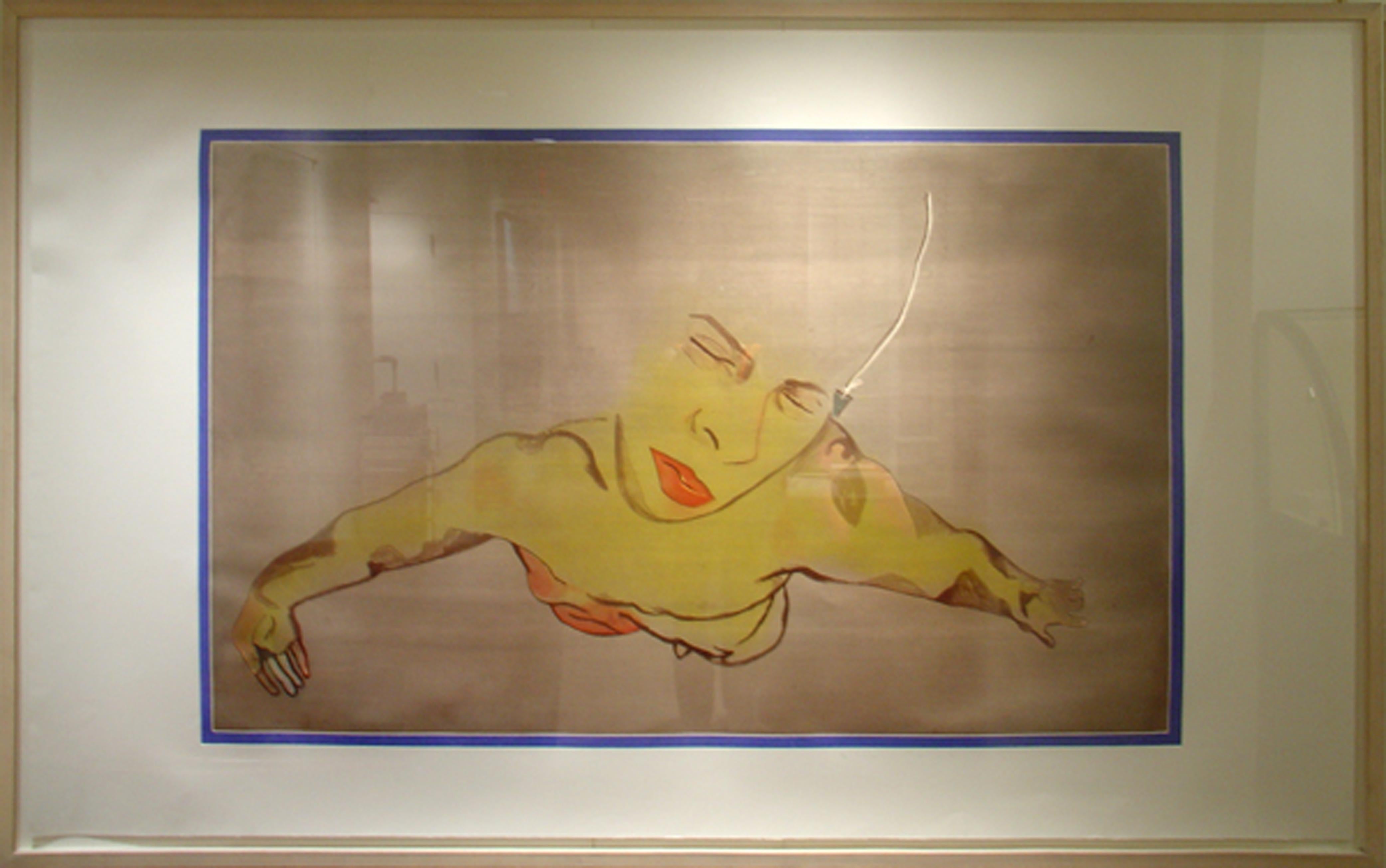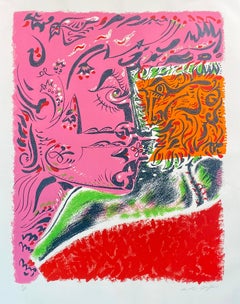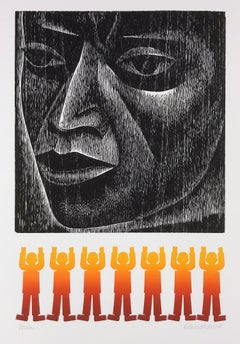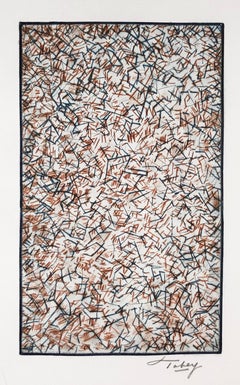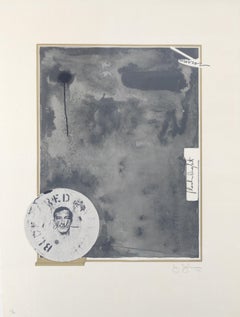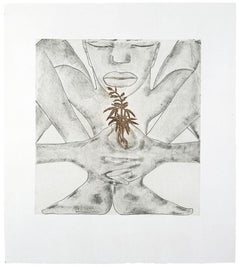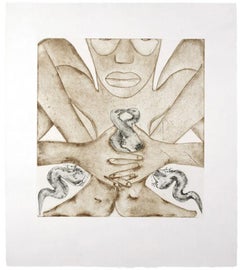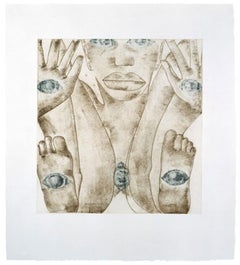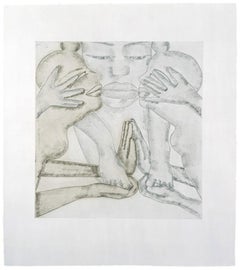Items Similar to Geography West
Want more images or videos?
Request additional images or videos from the seller
1 of 11
Francesco ClementeGeography West1992
1992
Price Upon Request
Price Upon Request
Price Upon Request
Price Upon Request
Price Upon Request
Price Upon Request
Price Upon Request
Price Upon Request
Price Upon Request
Price Upon Request
About the Item
This is a fabulous etching from the "Geography" series of etchings, created in 1992.
Signed Lower Right in Pencil
Numbered Lower Left 29/60
Sheet Size: 28 x 25 inches
Framed Size: 34 x 30.5 inches
The following was written and compiled by Jean Ershler Schatz, artist and researcher from Laguna Woods, California:
Francesco Clemente was born in Naples, Italy, the only child born to prosperous parents. His father was a judge, and he recalls his upbringing as "solitary". A self-taught painter, he began making art at the age of eight and became involved with contemporary art in Rome in the late 1960s. In 1970 he moved to Rome to study architecture, then left school and spent much of the decade traveling in India and Afghanistan with friend and early mentor Alighiero Boetti, an artist associated with the Arte Povera movement and Alba Primicieri, whom he subsequently married. Much of his time in the 70s was spent studying the occult and a wide range of philosophies. Cy Twombly and Joseph Beuys were also influences on him during those years. When he was very young, however, Clemente never aped the artists he admired, and he arrived at a relatively mature style when barely out of his teens. At the age of twenty he began to regularly exhibit in Europe and he had his first New York show in 1980.
Clemente has a prodigious talent. He wields a command of pictorial conventions that is altogether exceptional. Gifted with a facility of execution rare in his generation, Clemente has put his talent at the service of a metamorphic sensibility. In his work, the physiological and the dreamlike merge.
Clemente divides his time between New York, Madras and his native Italy. A sexual "commuter" as much as he is a geographic nomad, his confusion of sexual preference and sexual function are deliberate and complete. His wife, Alba, is a dark-haired strikingly dramatic woman who once acted with avant-garde theatre groups in Rome. They have four children. Alex Katz is a close friend; his is one of many watercolor portraits Clemente has been doing of people he likes.
Clemente's art is everywhere keyed to this awareness of fragility and metamorphosis. His chosen materials are at extremes of brittleness or fluidity. The surfaces of his oils are scrofulous; the contours of his ink drawings crackle and splinter; his watercolors bleed and the atomized pigments of his pastels on the page. Clemente is a compulsive worker who turns out a torrential river of art. Among the mediums he's mastered: drawing, painting, pastels, etching, photography, mosaic, sculpture and Indian miniatures
Sources include:
Robert Storr in Art in America, November 1987
Kristine McKenna, The Artist of Our Time, in the Los Angeles Times, August 19, 1990
Gargoyles, Goddesses and Faces in the Crowd by Paul Gardner, ARTnews, March 1985
Prints From the Alchemist's Laboratory by Don Hawthorne, ARTnews, Frebruary 1986
Realm of the Senses by Robert Storr in Art in America, November 1987
- Creator:Francesco Clemente (1952, Italian)
- Creation Year:1992
- Dimensions:Height: 34 in (86.36 cm)Width: 30.5 in (77.47 cm)
- Medium:
- Period:
- Condition:
- Gallery Location:Missouri, MO
- Reference Number:1stDibs: LU74732480931
About the Seller
5.0
Vetted Professional Seller
Every seller passes strict standards for authenticity and reliability
Established in 1970
1stDibs seller since 2017
156 sales on 1stDibs
Typical response time: Several days
- ShippingRetrieving quote...Shipping from: Missouri, MO
- Return Policy
More From This Seller
View AllProfil Rose
By André Masson
Located in Missouri, MO
Signed Lower Right
Numbered 61/200
Sight Size: 27.5 x 21.5
Framed Size: 31.5 x 24.5
Andre Masson was born in Balagne, France on January 4,1896. He was an engraver, sculptor, stage d...
Category
1960s Modern Figurative Prints
Materials
Lithograph
Price Upon Request
Man
By Elizabeth Catlett
Located in Missouri, MO
Elizabeth Catlett
“Man” 1975 (The Print Club of Cleveland Publication Number 83, 2005)
Woodcut and Color Linocut
Printed in 2003 at JK Fine Art Editions Co., Union City, New Jersey
Signed and Dated By The Artist Lower Right
Titled Lower Left
Ed. of 250
Image Size: approx 18 x 12 inches
Elizabeth Catlett (1915-2012) is regarded as one of the most important women artists and African American artists of our time. She believed art could affect social change and that she should be an agent for that change: “I have always wanted my art to service black people—to reflect us, to relate to us, to stimulate us, to make us aware of our potential.” As an artist and an activist, Catlett highlighted the dignity and courage of motherhood, poverty, and the working class, returning again and again to the subject she understood best—African American women.
The work below, entitled, “Man”, is "carved from a block of wood, chiseled like a relief. Catlett, a sculptor as well as a printmaker, carves figures out of wood, and so is extremely familiar with this material. For ‘Man’ she exploits the grain of the wood, allowing to to describe the texture of the skin and form vertical striations, almost scarring the image. Below this intense, three-dimensional visage parades seven boys, printed repetitively from a single linoleum block in a “rainbow roll” that changes from gold to brown. This row of brightly colored figures with bare feet, flat like a string of paper dolls, raise their arms toward the powerful depiction of the troubled man above.”
Biography:
Elizabeth Catlett (1915-2012)
Known for abstract sculpture in bronze and marble as well as prints and paintings, particularly depicting the female figure, Elizabeth Catlett is unique for distilling African American, Native American, and Mexican art in her work. She is "considered by many to be the greatest American black sculptor". . .(Rubinstein 320)
Catlett was born in Washington D.C. and later became a Mexican citizen, residing in Cuernavaca Morelos, Mexico. She spent the last 35 years of her life in Mexico.
Her father, a math teacher at Tuskegee Institute in Alabama, died before she was born, but the family, including her working mother, lived in the relatively commodious home of his family in DC. Catlett received a Bachelor of Arts degree from Howard University, where there was much discussion about whether or not black artists should depict their own heritage or embrace European modernism.
She earned a Master of Fine Arts degree in 1940 from the University of Iowa, where she had gone to study with Grant Wood, Regionalist* painter. His teaching dictum was "paint what you know best," and this advice set her on the path of dealing with her own background. She credits Wood with excellent teaching and deep concern for his students, but she had a problem during that time of taking classes from him because black students were not allowed housing in the University's dormitories.
Following graduation in 1940, she became Chair of the Art Department at Dillard University in New Orleans. There she successfully lobbied for life classes with nude models, and gained museum admission to black students at a local museum that to that point, had banned their entrance. That same year, her painting Mother and Child, depicting African-American figures won her much recognition.
From 1944 to 1946, she taught at the George Washington Carver School, an alternative community school in Harlem that provided instruction for working men and women of the city. From her experiences with these people, she did a series of paintings, prints, and sculptures with the theme "I Am a Negro Woman."
In 1946, she received a Rosenwald Fellowship*, and she and her artist husband, Charles White, traveled to Mexico where she became interested in the Mexican working classes. In 1947, she settled permanently in Mexico where she, divorced from White, married artist Francisco Mora...
Category
Late 19th Century American Modern Figurative Prints
Materials
Linocut, Woodcut
Price Upon Request
Pensees Germinales
By Mark Tobey
Located in Missouri, MO
Mark Tobey
"Pensees Germinales" 1973
Drypoint Engraving Printed in Brown and Blue by Willie Steinert, Karlsruhe, Germany, on Auvernge Paper Handmade by Richard de Bas
Signed Lower R...
Category
1970s Abstract Abstract Prints
Materials
Engraving, Drypoint
Price Upon Request
Souvenir I
By Jasper Johns
Located in Missouri, MO
Jasper Johns (American, b. 1930)
Souvenir I, 1972
Lithograph in Colors on Angoumois a la Main Paper
Hand-signed Lower Right
Numbered 20/63 and Stamped Lower Left
38.5 x 29.5 inches
3...
Category
1970s Pop Art Abstract Prints
Materials
Paper, Lithograph
$15,000
The Maroon Robe
By Jim Dine
Located in Missouri, MO
Maroon Carborundum Robe (C. 47), 1991
Published by Pace Editions, New York
Jim Dine (American, b. 1935)
Woodcut Print
Hand Signed, Dated, and Numbered Lower Left
Edition 1/12 Lower L...
Category
1990s Pop Art Mixed Media
Materials
Color, Woodcut
Personnages De Sacre Printemps V
By Marino Marini
Located in Missouri, MO
Color Lithograph
Signed and Numbered Ed. 75
Marino Marini (February 27, 1901 — August 6, 1980) was an Italian sculptor.
Born in Pistoia, Marini is particularly famous for his serie...
Category
1970s Modern Figurative Prints
Materials
Lithograph
You May Also Like
Francesco Clemente, Geography West
By Francesco Clemente
Located in New York, NY
GEOGRAPHY, WEST
Year: 1992
Medium: 2-color, soft ground etching
Paper Size: 28 x 25 inches (71 x 64 cm)
Plate Size: 19 x 18 inches (48 x 46 cm)
Edition: 60
Price: $6,000
Suite of f...
Category
1990s Contemporary Figurative Prints
Materials
Etching
Francesco Clemente, Geography South
By Francesco Clemente
Located in New York, NY
GEOGRAPHY, SOUTH
Year: 1992
Medium: 2-color, soft ground etching
Paper Size: 28 x 25 inches (71 x 64 cm)
Plate Size: 19 x 18 inches (48 x 46 cm)
Edition: 60
Price: $6,000
Suite of ...
Category
1990s Contemporary Figurative Prints
Materials
Etching
Francesco Clemente, Geography East
By Francesco Clemente
Located in New York, NY
GEOGRAPHY, EAST
Year: 1992
Medium: 2-color, soft ground etching
Paper Size: 28 x 25 inches (71 x 64 cm)
Plate Size: 19 x 18 inches (48 x 46 cm)
Edition: 60
Price: $6,000
Suite of f...
Category
1990s Contemporary Figurative Prints
Materials
Etching
Francesco Clemente, Geography, North
By Francesco Clemente
Located in New York, NY
NORTH
Year: 1992
Medium: 2-color, soft ground etching
Paper Size: 28 x 25 inches (71 x 64 cm)
Plate Size: 19 x 18 inches (48 x 46 cm)
Edition: 60
Price: $6,000
Suite of four also a...
Category
1990s Contemporary Figurative Prints
Materials
Etching
Large Italian Aquatint Etching Francesco Clemente Neo Expressionist Avant Garde
By Francesco Clemente
Located in Surfside, FL
Francesco Clemente (Italian b. 1952),
'This side up / Telemone #2,
1981
Medium: Intaglio hard ground etching, color aquatint, drypoint, and soft-ground etching with chine collé (ha...
Category
1980s Abstract Expressionist Abstract Prints
Materials
Drypoint, Etching, Aquatint, Intaglio
Semen
By Francesco Clemente
Located in New York, NY
Francesco Clemente is a contemporary Italian artist known for his dreamlike paintings based on esoteric themes of sexuality and spirituality. Working across oil painting, installatio...
Category
1980s Prints and Multiples
Materials
Etching, Aquatint
Price Upon Request
More Ways To Browse
Madras Vintage
Picasso Ecuyere
Picasso Farol
Picasso Lithograph Bathers
Picasso Lithograph Couple
Picasso Marlborough
Picasso Pencil Signed
Picasso Plates Signed
Picasso Series 156
Picasso Toros Vallauris
Picasso Woman With Hat
Pierre Etienne Moitte
Piranesi Prints Carceri
Pop Shop 1
Poster Mardi Gras
Raoul Dufy Horse Lithograph
Raoul Dufy Lithograph Ascot
Rare Album Covers
